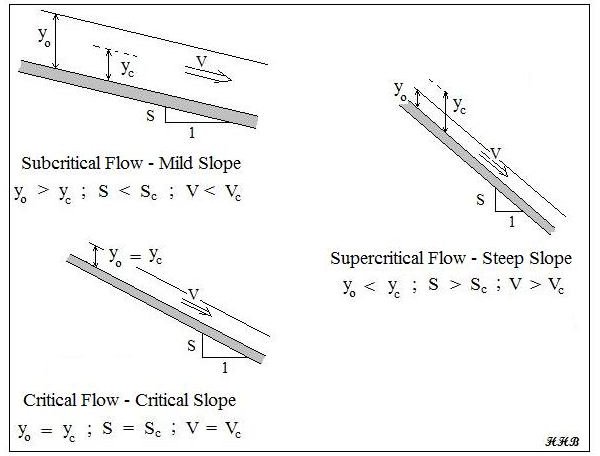Reference




OpenAI's Answer
The critical depth in open channel flow is the flow depth at which the specific energy is minimized for a given discharge. It represents a state where the flow transitions between supercritical and subcritical conditions. Here's a more detailed explanation:
-
Specific Energy: The critical depth occurs when the specific energy (total energy per unit weight of fluid relative to the channel bottom) is at its minimum value.
-
Calculation: For rectangular channels, the critical depth ((d_c)) can be calculated using the formula: [ d_c = \left(\frac{Q^2}{b^2g}\right)^{1/3} ] where (Q) is the discharge, (b) is the channel width, and (g) is the acceleration due to gravity.
-
Flow Conditions: Critical flow is a unique state characterized by maximum discharge for a minimum specific energy, indicating a balance point between gravitational forces and inertial forces.
You might find further information and insights on this topic through resources such as the Civil Engineering Portal.

Follow Up
Related
How are the television channel frequencies divided internationally for VHF and UHF bands?
What changes were made to Australia's channel frequencies after transitioning to digital TV?
What assumptions are made when using the energy equation in open channel flow?
Which Canadian news channels are must-offer for broadcasters?